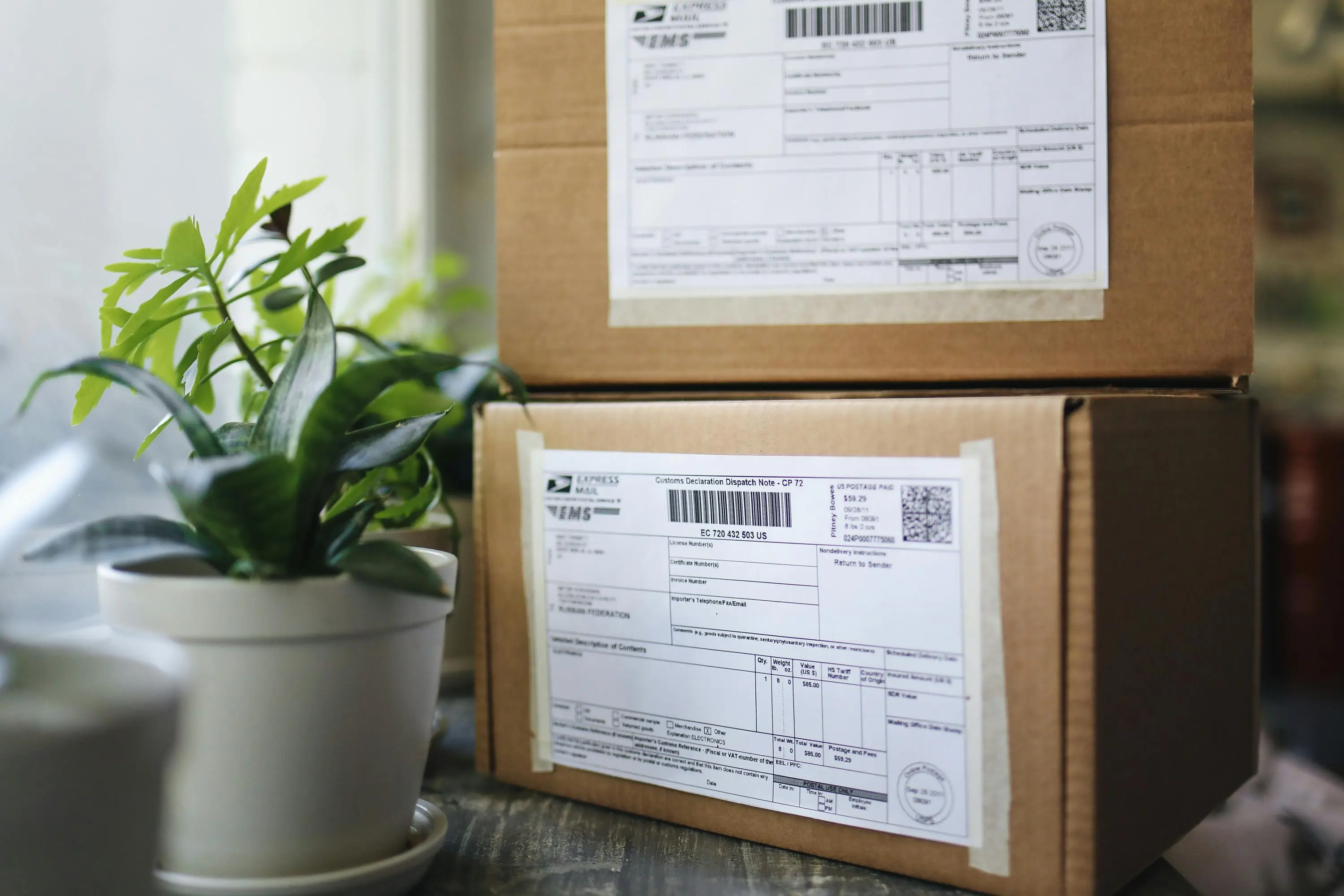Amazon FBA Shipping Plan: What It Is and How to Execute It Right
Shipping to Amazon FBA requires a precise plan to avoid delays, fees, or refused shipments. This guide is for DTC brands, retail marketers, and procurement teams comparing 3PLs or kitting services. Learn what an Amazon FBA shipping plan entails, how the workflow runs, pricing drivers, and risks—and why partnering with an Atlanta-based 3PL like All Points simplifies your process.
.webp)
What Is an Amazon FBA Shipping Plan (And When to Use It)?
An Amazon FBA shipping plan in Seller Central is the detailed document that specifies how your products are shipped to Amazon fulfillment centers. It includes critical information such as SKUs (Stock Keeping Units), ASINs (Amazon Standard Identification Numbers), quantities, packing types, ship-from addresses, and shipping methods. This plan tells Amazon exactly what inventory to expect, how it is packed, and where it is coming from.
When to Use an Amazon FBA Shipping Plan
Any brand or seller sending inventory to Amazon warehouses needs to create a shipping plan. It’s especially crucial for those replenishing stock or launching new products directly into FBA. The shipping plan ensures compliance with Amazon’s strict packaging, labeling (including FNSKU and FBA Box ID labels), and routing requirements.
Failing to use, or improperly executing, an Amazon FBA shipping plan can lead to refused shipments, rework fees, inventory delays, and ultimately lost sales due to stockouts or reduced sales velocity.

Step-by-Step Workflow for Creating and Executing an Amazon FBA Shipping Plan
Creating and executing an Amazon FBA shipping plan requires careful, stepwise execution to reduce errors, delays, and avoid costly penalties. Here’s an operator-level workflow to get it right every time:
1. Login and Create a Shipping Plan in Amazon Seller Central
- Access your Amazon Seller Central account.
- Navigate to the “Inventory” tab and select “Manage FBA Shipments.”
- Click “Send/Replenish Inventory” to start a new shipping plan.
2. Select SKUs and Set Quantities
- Choose the SKUs or ASINs you want to ship to Amazon.
- Enter the quantities per SKU to include in this shipment.
- Confirm your ship-from address—this is either your warehouse or the 3PL facility sending inventory on your behalf.
3. Choose Your Packing Type
- Indicate whether you’re shipping individual units that Amazon will pick case-by-case or case-packed boxes where all items are the same SKU.
- Packing type affects how you prepare and label cartons.
4. Prepare and Package Inventory to Amazon’s Standards
- Follow Amazon’s packaging requirements to ensure your cartons meet dimension and weight limits without bulging or damage risk.
- Use certified packaging materials approved by Amazon to protect product integrity in transit.
- Include protective dunnage (e.g., bubble wrap) inside cartons as needed.
5. Labeling: FNSKU and FBA Box ID Labels
- Print and apply FNSKU labels on every sellable unit unless the item is exempt due to manufacturer barcode approval.
- Affix FBA Box ID labels (two per carton, placed on opposite sides) per Amazon specifications to allow warehouse scanning and tracking.
- Ensure labels are unobstructed, legible, and adhere properly — avoid printing over box seams or tape.
- If palletizing, apply pallet labels as required by Amazon.
6. Build and Cartonize
- For case-packed shipments, assemble identical units per carton consistently.
- Mixed-SKU boxes are generally discouraged unless your plan explicitly authorizes them—accurately reflect contents in the shipping plan and label cartons accordingly.
7. Choose the Shipping Method and Routing
- In Seller Central, select the appropriate inbound shipping method:
- Small Parcel Delivery (SPD) for small box shipments.
- Less Than Truckload (LTL) or Full Truckload (FTL) for palletized freight.
- Follow prompts for carrier selection or use Amazon’s partnered carrier options to reduce costs and coordinate pickups.
- Schedule carrier pickup or arrange shipment drop-off.
8. Prepare Shipping Documentation
- Include accurate packing lists, bill of lading (BOL), and shipment weight information.
- Confirm all shipment details match those entered in the Seller Central shipping plan.
9. Track Shipment and Confirm Receipt
- Monitor shipment in transit and confirm delivery to the Amazon fulfillment center.
- Verify dock-to-stock timing and reconcile quantities received versus shipped.
- Any discrepancies should be immediately addressed with warehouse and carrier contacts.
10. Continuous Improvement and Buffer Inventory
- Document and analyze errors such as label misplacements or overweight cartons.
- Revise standard operating procedures (SOPs) based on error trends.
- Maintain buffer stock at your 3PL or warehouse to avoid stockouts during shipping delays.
For a comprehensive overview, see helpful educational content from Mayple on Amazon FBA shipping plans.
Amazon FBA Shipping Plan KPIs and SLAs to Monitor
Tracking key performance indicators (KPIs) and adhering to service level agreements (SLAs) ensures your FBA shipments reach Amazon on time, intact, and properly inventoried.
.webp)
Maintaining these KPIs helps avoid costly errors and elevates your Amazon supply chain performance.
Pricing Drivers for Amazon FBA Shipping Plans
Understanding what impacts the cost of your FBA shipping plan helps plan budgets and optimize expenses:
- Shipment Volume and Frequency: Larger and more frequent shipments benefit from economies of scale, lowering per-unit freight and handling costs.
- Packing Complexity: Custom kitting, bundling, or specialty packaging require more labor and materials, increasing prep fees.
- Labeling and Prep Services: Outsourcing labeling (FNSKU, box labels) and prep reduces errors but adds service charges.
- Carrier and Mode Choice: Standard LTL shipping costs less than expedited or white glove delivery, which might be necessary for fragile or high-value items.
- Storage Fees: Delays at Amazon—caused by noncompliance or late delivery—can trigger long-term storage fees and return shipments, escalating cost.
- Seasonal Surcharges: Peak periods like Q4 usually incur carrier capacity constraints and surcharges for expedited or guaranteed appointments.
- Product Dimensions and Weight: Oversized or heavy cartons attract higher freight fees and Amazon surcharges.
A cost-efficient shipping plan balances these factors to maximize compliance, minimize delays, and control fees, protecting profit margins.

Risks & Mitigations When Managing Amazon FBA Shipping Plans
Like any logistics process, FBA shipping plans have inherent risks. Mitigating these proactively preserves inventory flow and sales performance:
1. Shipment Rejections
Labels missing, misapplied, or noncompliant packaging can cause Amazon to refuse shipments, leading to storage fees and delays.
Mitigation: Use validated SOPs with quality control (QC) label checks before shipment.
2. Shipping Delays
Carrier appointment failures or routing missteps delay inventory arrivals, risking stockouts on Amazon.
Mitigation: Schedule shipments well in advance; maintain safety stock buffers; partner with knowledgeable carriers or 3PLs.
3. Hidden or Unexpected Fees
Amazon’s prep and removal fees, rework charges, and penalties for noncompliance quietly erode profits.
Mitigation: Outsource prep to trained teams with mastery of Amazon’s current guidelines, minimizing chargebacks.
4. Data Errors
Inputting wrong SKU quantities or ship-from addresses in Seller Central leads to receiving holds or lost products.
Mitigation: Integrate warehouse management systems (WMS) to sync accurate data and apply scan-based verification workflows.
5. Damage During Transit
Poor packaging choices cause product damage and lost sales.
Mitigation: Test packaging for durability; use protective materials; follow Amazon’s weight and dimension limits rigidly.
All Points’ Atlanta Advantage for Amazon FBA Shipping Plans
All Points, founded in Atlanta in 1995, offers a strategic fulfillment advantage designed to optimize your Amazon FBA inbound process:
- Two-Day Reach to 80% of the U.S.: Faster transit times from Atlanta reduce shipment delays and inventory lead times, preserving sales velocity.
- End-to-End Fulfillment in a Single Facility: All Points combines custom kitting, labeling, printing, and packing operations under one roof to minimize handoffs and reduce errors.
- SOP-Driven Processes and SLA Monitoring: We implement meticulously documented Standard Operating Procedures and real-time KPI tracking to meet your accuracy and on-time shipment goals.
- Expertise in Complex Kitting & Printing: Trusted by premium brands (including a Porsche-level sample project), All Points guarantees meticulous quality control and exact execution for multi-component kits and branded packaging.
- Partnership Mindset: Dedicated onboarding and ongoing support ensure that workflows integrate seamlessly, making volume scaling predictable and stress-free.

What You Get with All Points
Working with All Points means you benefit from:
- Amazon-compliant custom kitting and product assembly services, including FNSKU labeling, bubble wrap, poly-bagging, cartonization, and FBA Box ID labeling applied by expertly trained teams.
- Accurate, real-time inventory tracking with scan-based quality verification at unit and carton levels, minimizing discrepancies at Amazon’s receiving docks.
- Flexible assembly for promotional packs, subscription kits, and multi-SKU bundles built exactly to your specifications.
- Printing services for inserts, sleeves, and branded materials aligned with Amazon packaging guidelines and your brand identity.
- Accelerated replenishment from Atlanta with shortened transit time to Amazon fulfillment centers nationwide, improving in-stock rates and lowering freight costs.
- Seamless handoff including clean documentation, BOL accuracy, and routing expertise that reduces delays, receiving disputes, and fees.
Frequently Asked Questions (FAQ)
Q1: What is an Amazon FBA shipping plan?
An Amazon FBA shipping plan is a detailed inventory shipment specification created in Seller Central that defines SKUs, quantities, packaging type, ship-from address, and shipping method to Amazon warehouses.
Q2: How do I label boxes for Amazon FBA shipments?
Each sellable unit must have an FNSKU label unless using manufacturer barcodes approved by Amazon. Each carton requires two FBA Box ID labels placed on opposing carton sides, easily scannable and unobstructed.
Q3: What causes shipment delays to Amazon FBA?
Delays often stem from incorrect labeling or packaging, failure to meet Amazon’s routing and carrier requirements, and late carrier pickups or appointments.
Q4: Can All Points handle Amazon FBA prep and kitting?
Yes. All Points offers comprehensive services including kitting, labeling, printing, and packaging fully compliant with Amazon standards.
Q5: How does the Atlanta location improve fulfillment?
Atlanta’s central logistics hub allows All Points to reach 80% of the U.S. customer base within two days by ground, enabling faster replenishment, fewer shipping delays, and reduced freight expenses.
Implementation Checklist: Ensure Your Shipping Plan Success
- Confirm SKUs, quantities, and ship-from addresses in Seller Central.
- Define packaging and protection materials per Amazon’s guidelines.
- Apply and verify quality of FNSKU labels on each unit.
- Consistently build cases; avoid overweight or bulging cartons.
- Print and affix FBA Box ID labels to cartons and pallet labels where applicable.
- Book carriers and schedule appointments in adherence to Amazon routing requirements.
- Prepare accurate Bill of Lading (BOL) and packing lists; hand off to carriers cleanly.
- Track shipment progress and reconcile received quantities promptly.
- Document issues and continuously update SOPs; maintain safety stock buffers.

Why Brands Choose All Points for FBA Prep and Shipping Plans
All Points has built a reputation on operational excellence and customer dedication since 1995. Our Atlanta location, operator-grade execution, and comprehensive kitting, print, and fulfillment services offer:
- Reduced touches and fewer errors by housing Amazon prep, kitting, and print all in one facility.
- Two-day ground transit advantage to 80% of the U.S., ensuring timely restock and sales continuity.
- Transparent monitoring and reporting of KPIs and SLAs that help improve your inbound shipments continuously.
Explore these solutions and more:
- Comprehensive custom kitting and product assembly services: /services/kitting-assembly
- Reliable e-commerce order fulfillment solutions that integrate seamlessly with Amazon workflows: /services/e-commerce-order-fulfillment
- Ready to talk timing, pricing, and SLAs? Schedule a call with an Atlanta 3PL expert
About All Points
All Points is an Atlanta-based, family-owned 3PL founded in 1995. We deliver end-to-end logistics—from custom kitting and e-commerce fulfillment to warehousing, distribution, and printing—so your brand ships accurately, on time, and at scale.
Conclusion
Master your Amazon FBA shipping plan to avoid delays, fees, and shipment refusals. Learn step-by-step how to create compliant plans, label and pack inventory correctly, and choose the right shipping methods. Partner with Atlanta-based All Points for streamlined prep, faster transit, and error-free fulfillment.




.webp)

.webp)
.webp)
.webp)
.webp)

